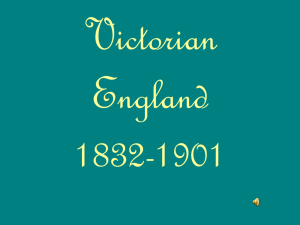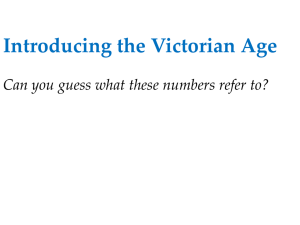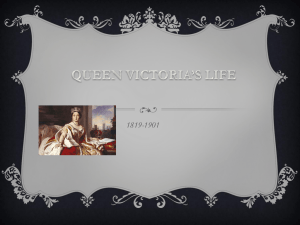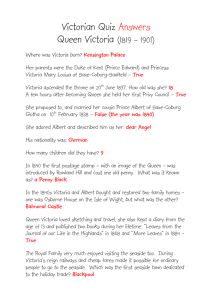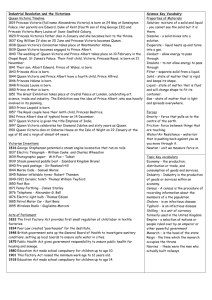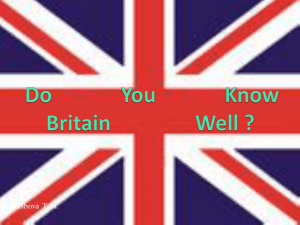Queen Victoria (2)
advertisement
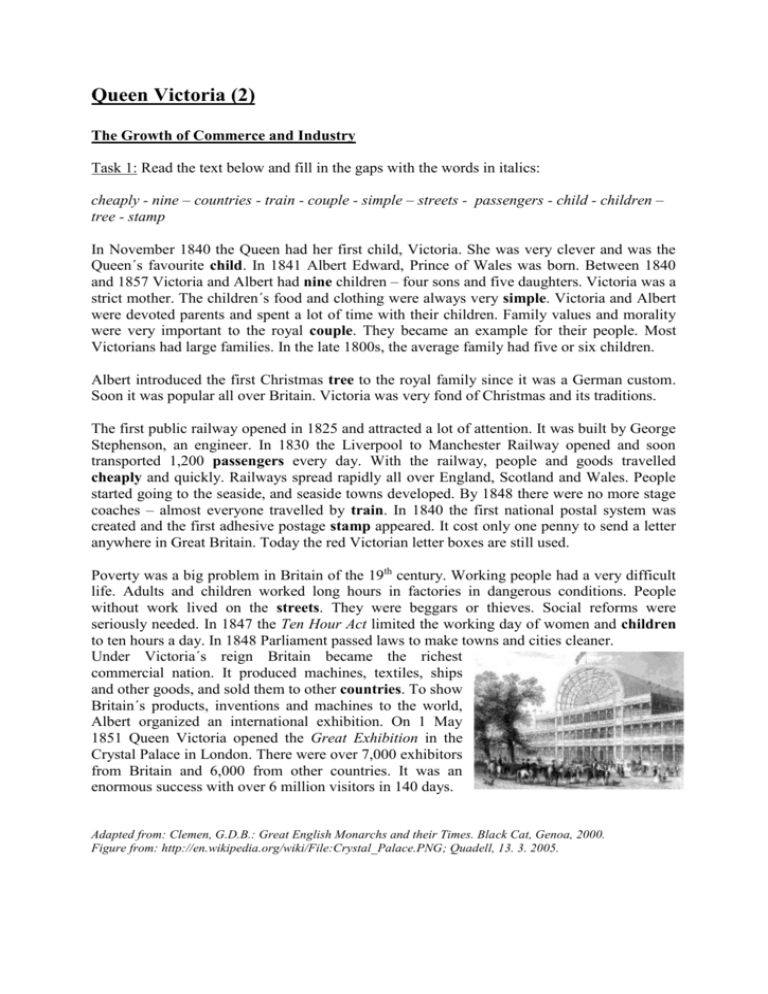
Queen Victoria (2) The Growth of Commerce and Industry Task 1: Read the text below and fill in the gaps with the words in italics: cheaply - nine – countries - train - couple - simple – streets - passengers - child - children – tree - stamp In November 1840 the Queen had her first child, Victoria. She was very clever and was the Queen´s favourite child. In 1841 Albert Edward, Prince of Wales was born. Between 1840 and 1857 Victoria and Albert had nine children – four sons and five daughters. Victoria was a strict mother. The children´s food and clothing were always very simple. Victoria and Albert were devoted parents and spent a lot of time with their children. Family values and morality were very important to the royal couple. They became an example for their people. Most Victorians had large families. In the late 1800s, the average family had five or six children. Albert introduced the first Christmas tree to the royal family since it was a German custom. Soon it was popular all over Britain. Victoria was very fond of Christmas and its traditions. The first public railway opened in 1825 and attracted a lot of attention. It was built by George Stephenson, an engineer. In 1830 the Liverpool to Manchester Railway opened and soon transported 1,200 passengers every day. With the railway, people and goods travelled cheaply and quickly. Railways spread rapidly all over England, Scotland and Wales. People started going to the seaside, and seaside towns developed. By 1848 there were no more stage coaches – almost everyone travelled by train. In 1840 the first national postal system was created and the first adhesive postage stamp appeared. It cost only one penny to send a letter anywhere in Great Britain. Today the red Victorian letter boxes are still used. Poverty was a big problem in Britain of the 19th century. Working people had a very difficult life. Adults and children worked long hours in factories in dangerous conditions. People without work lived on the streets. They were beggars or thieves. Social reforms were seriously needed. In 1847 the Ten Hour Act limited the working day of women and children to ten hours a day. In 1848 Parliament passed laws to make towns and cities cleaner. Under Victoria´s reign Britain became the richest commercial nation. It produced machines, textiles, ships and other goods, and sold them to other countries. To show Britain´s products, inventions and machines to the world, Albert organized an international exhibition. On 1 May 1851 Queen Victoria opened the Great Exhibition in the Crystal Palace in London. There were over 7,000 exhibitors from Britain and 6,000 from other countries. It was an enormous success with over 6 million visitors in 140 days. Adapted from: Clemen, G.D.B.: Great English Monarchs and their Times. Black Cat, Genoa, 2000. Figure from: http://en.wikipedia.org/wiki/File:Crystal_Palace.PNG; Quadell, 13. 3. 2005. Task 2: List the changes/inventions that this period brought and what they meant to the society: Suggested answers: Christmas tree – beginning of the tradition Railway – the beginning of quicker and safer transport Postage stamp – postal services Ten Hour Act – limited working day for women and children Production of machines, textiles, ships and other goods – international trade Great Exhibition in the Crystal Palace in London – beginning of the tradition of world fairs and exhibitions Task 3: Write an invitation card to the Great Exhibition – use the information from the text. Phrases for official invitations should be introduced. Fluency should be stressed above accuracy. Suggestions: We take great pleasure in inviting you to … We invite you to … We greatly look forward to your attending the … We are pleased and honoured to invite you to … Her Majesty Queen Victoria and her Husband …. take the great pleasure in ….
